A New Challenger
Previously on “One Percent,” Spotify became one focal point in discussing the new generation of music consumption. There’s no doubt streaming is the future as the Sweden-based giant has crowned itself king with over 60 million active users. Consumers were in love with the service’s intuitive interface and ability to enjoy millions of songs without a hassle. Artists ranging from Taylor Swift to Aloe Blacc had major issues with compensation calling the distribution of funds unfair. The conversation essentially turned Spotify into an evil industry empire hurting music creators all around. Didn’t matter much, the company still grew on both free and subscriber ends. Then March 30, 2015 arrived. Following the acquisition of Aspiro earlier in the year, Jay Z holds one helluva press conference for a relaunch of the Norway-based media technology company Tidal. Some of the music industry’s biggest artists from Nicki Minaj, Madonna, Beyonce, Alicia Keys, Daft Punk, Chris Martin and Usher, among others, took a stand against Spotify’s perceived robbery. No matter how rich and luxurious their lives were to the buying public, the company represented by one lime colored circle with three curved stripes was muddying the money. To some, Tidal represented artists taking control of their business within the digital age. For others, the press conference represented one large circle jerk. Could the service backed by some of the music’s biggest stars catch up to Spotify’s four-year lead so soon? Laptop Mag senior staff writer Sherri Smith said reception had much to do with circumstances and not the actual products themselves. “You have some of the world’s most popular artists coming together to make some sort of statement about the state of music distribution, which came off as earnest at best or pretentious at worst,” said Smith. “Spotify, when it launched, just wanted to let subscribers listen to their favorite music and hopefully discover some new jams along the way.” How do both services fair themselves? Right now, the favor depends on what side of the music industry one falls under.
Tidal set itself apart by being a subscription-based service starting at $9.99 and $20 for its Hi-Fi plan. This is in opposition to Spotify’s free ad-based offering and premium ten buck offering. At its lower level $9.99, Tidal offers exclusive music, videos, and even artist editorials among others. Within the last several weeks, Hov, Daft Punk, Rihanna, Lil Wayne, Beyonce and Nicki Minaj all dropped exclusive content on the service. Just last weekend, Tidal even exclusively held a live stream of Hot 97’s Summer Jam concert. Of course, those were eventually available for free through various torrents, YouTube pages and media hosting sites easily. This is where the higher Hi-Fi plan comes in handy. Advertising the quintessential music listening experience, Tidal offers CD-quality music at 1411kbps, 16-bit/44.1 kHz FLAC and ALAC music streams which audiophiles will love but, most won’t notice outside of bragging rights according to Zion I’s Amp Live. “If you have a good expensive pair of headphones and you really pay attention you will probably hear a difference,” Amp Live said. “But the average person doesn’t have expensive headphones and really just wants to hear that song they like, regardless of it being good or better quality.” Smith also adds that most audio enthusiast already have pricey amps, pre-amps, and DACs but adds some additions have improved the overall experience. “The new desktop app is a step in the right direction as is the discount plan aimed at students,” Smith said. “Another smart move on Tidal’s part is allowing users to purchase concert tickets from within the app, a feature Spotify has eliminated from its service. The service can potentially cut itself a bigger piece of the pie if it offers exclusive merchandise in addition to concert and festival tickets.” With 540,000 subscribers and growing, Spotify must be feeling some pressure. During their press conference in May, the streaming leader announced its own introduction of video content from major networks including MTV, YouTube and ESPN along in addition to the podcast. Artists wise, Spotify pays between $0.00225 – $0.0025 cents per stream while Tidal reportedly offers $0.024 – 0.028 cents.
Apple Music Joins The Fray
The on-going battle between Spotify and Tidal is getting ridiculous nearly each week. Hov took shots at the opposition during his exclusive B-Sides concert. The opposition’s CEO Daniel Ek feels that the freemium model works and called Tidal’s attitudes toward advertising music upsetting. Those allegations of Spotify ripping off artists were put to rest when leaked Sony Music documents showed Spotify paying the major label a $25 million advance for two years and an extra $17.5 million for an optional third year. That doesn’t count the shares Sony gets from Spotify’s 70 percent revenue payout. Like Bono told Rolling Stone, it’s not that Spotify isn’t paying artists, labels aren’t being transparent. Leave it to 50 Cent, most artists lending love to Tidal don’t even own their masters. Meanwhile, customers are reaping the benefits of competition and artists themselves are scrambling to monetize anything they can. Things should be able to work themselves out in the long run, especially once iTunes/Beats joins the fight, according to Amp Live. “Competition in a market that we have today is always good because it creates checks and balances,” said Amp Live. “You have to remember, though, streaming services are a small percentage of how people listen to their music. Once companies start seeing what they are missing, there will be more streaming services up.” Apple’s acquisition of Beats last year makes them the wild card that could potentially give both Spotify and Tidal a run for their money. Monday morning, during the Cupertino-based company’s keynote address for their 2015 World Wide Developer’s Conference, they made good on that promise and then some through Apple Music.
After a largely underwhelming address speaking about their upcoming iOS and OSX software updates, Apple brought Jimmy Iovine onstage to talk their rebranded iTunes. Oh yeah, there was that speech from Drake where he announces his new album, and a closing performance by The Weeknd. Calling Apple Music a “revolutionary music service,” the $9.99 service may be the biggest wake up call for the streaming generation. The biggest component will be a 24/7 global radio station dubbed “Beats One” kickstarted by Nine Inch Nails’ Trent Reznor. Spearheading the boldest online radio station move in music history include former BBC Radio One host Zane Lowe, Hot 97 DJ Ebro Darden, and legendary UK tastemaker Julie Adenuga. Three cities will broadcast music from various DJs streaming from within Apple’s Music app for free, even without a subscription. Interestingly enough, the app will be available through Android as well. That means that potentially iOS’ 470 million active users will be joined by the over 1 billion users of Google’s OS. A social aspect within Apple Music called “Connect” will also have fans connect with artists along with an algorithm that caters content for users based on their music choices through “For You.” Not only is Apple going after Spotify, Tidal (which is more expensive on iOS devices) and the numerous other streaming services, the house that Steve Jobs built is taking on Pandora as well when it launches June 30.
Many questioned why Apple felt the need to purchase Beats. Sure, the ludicrously priced headphones were selling like hotcakes but, they never met real quality standards while the Beats Music streaming service was seen by many as a failure. Today’s announcement spectacle made absolute sense according to DX Butthead Developer John Cornelius. “Beats proved that if you had something that was seen as cool, big companies would shell out millions to buy into the cool,” said Cornelius. Apple bought the cool factor. And you see, what is music if not cool. If you’re the best show and only show in town, someone is going to have to buy into that cool.” For nearly two decades, Apple’s goal has been to become the center of music distribution when they launched the original iTunes for their revolutionary product, the iPod. They were cool, the only important kid in town when it came to digital music distribution. Years down the line, iTunes isn’t the focal point of music consumption. After this recent announcement, they may have another chance at complete dominance while almost making Dr. Dre Hip Hop’s first billionaire in the process. Apple Music, Spotify and Tidal are pulling out all stops for consumer’s pocketbooks as well as exclusive artist content. From the looks of things, the future of music may finally see a perfect balance of art and commerce. Music listeners may wind up just as satisfied as artists themselves. Everyone’s happy right? Only time can tell.
Artists Find Power Through Personalized Mobile Apps
Until then, several innovative artists are taking unique steps to have 100 percent control of their brand while reaping all the rewards. This is happening through artist-centered mobile apps. Artists are finding radically different approaches to this idea and find themselves enjoying success on their terms. Earlier this month, Odd Future founding father Tyler The Creator launched Golf Media. Available for free on both iOS and Android, the app features radio shows, original cartoons, live concert streams, editorials, music and a program block. Speaking with Tyler’s manager Christian Clancy, Golf Media to Fader is described as “a bunch of different things that [are] original, curated and constantly changing, original series, content, live streaming, radio, tour stuff, golf wang, interactive and whatever other buzzwords that sound mildly annoying and marketing-like.” The subscription based app gives users the first two months free and later a $5 monthly charge afterwards. This means the ultimate Tyler fans will be lending $60 yearly to the Cherry Bomb rapper. For someone who has been increasingly hostile of mainstream media, Golf Media allows direct contact with fans. Most importantly, he’s controlling his narrative, and making a ton of dough. Developed by Whalerock Industries, the Los Angeles-based company has already secured deals for similar apps with Howard Stern and each member of the Kardashian clan (sans Kanye). “The thing with these apps are that they’re turning artists into multifaceted media machines,” said DX Developer Stephen Neptune. “They’re giving you music, video, art and other things. They’re creating artist branding around the music.”
Tyler isn’t the first to this new future phenomenon. New Orleans emcee 3D Na’Tee has been up on the app game since launching her own in 2013. “I noticed how phones got bigger, laptops got smaller and people traded hours of sitting at a computer, to hours thumbing through websites on their phone,” she said. After spending time creating exclusive music, videos and what she describes as “all kinds of shit,” she partnered with Los Angeles-based customized app developer Mobile Roadie. Though the 3D Na’Tee app was free when it dropped initially, an updated version has her charging $0.99 cents. This gives users access to over 100 songs, 85 videos, live streams, a merch shop, tour dates and ability to directly speak with her audience. “Me, I rather sell my shit a million times for a dollar,” said 3D Na’Tee.“It’s more reasonable. If someone has never heard of me, they are more likely to spend a dollar and take a chance to download it considering everything my app offers.” Counting checks she receives from music downloads, touring, app and in-app purchases, she’s enjoying a level of success without major labels or managing cutting into her pockets. Though actual user numbers weren’t revealed, she has used her own app to gauge fan analytics and demographics. “At the end of last year I did a poll to see where the majority of my fans lived,” she said. “ I found out that I had a lot of love in Europe. So, in February, I went on a European Tour with Future Brown for sold out shows in Paris, London and Berlin every night.” Not only do apps like those from 3D Na’Tee and Tyler The Creator open the door for artists to utilize their large fan bases fully outside of corporate backing. This means unadulterated freedom.
By now, the options for music artists to get their music heard are near infinite. The ability to make money from music and connect with fans is easier than ever. Giving away free music through mixtape sites or blogs should finally be a thing of the past. Ten years ago, iTunes was the best way to purchase digital music. Now, the once dominant digital music store has to deal with Amazon, Xbox Music and Google Play. Pandora’s radio music streaming seemed like the future before Spotify kicked over buildings. As Tidal and Apple Music enter the arena, the much needed competition benefits all. It’s going to be all about where consumers and artists meet. The war over consumer dollars aren’t being fought on the storefronts of Tower Records, Warehouse Records and Sam Goody. They’re being waged online between Apple, Google, Spotify, Microsoft and Tidal. Artists who want a more direct approach to fandom and their brand also have their own options through personalized apps. Artists as well as consumers have more choices than ever which means better music and ways of attaining. After years of confusion within the digital space that began with a focus on online piracy thanks to Napster, there finally seems to be a surface level conscious of how to handle music within the internet age. Ladies and gentlemen, welcome to a new era of sonic art. You don’t own the music, of course. But that’s okay, right?

![50 Cent Shares Unseen Diddy Footage From Netflix Documentary: "[It] Shows You His Character"](https://hiphopdx.com/wp-content/uploads/2025/12/50-cent-diddy-documentary-trailer-unseen-footage.jpg?w=250)
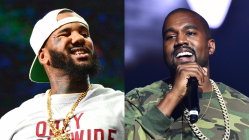
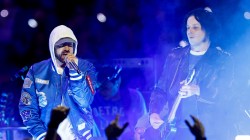
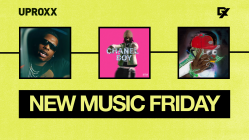
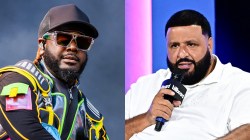

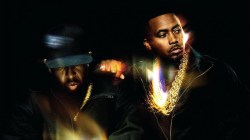

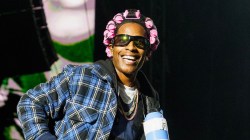
Self awareness at it’s finest.
Great article btw.
Me I won’t buy any of these services.
I’ll continue to buy physical copies of music I support.
if it ain’t on vinyl…i don’t buy it. simple as that
I’m sorry I don’t have enough fucking money to buy all this music……Spotify makes it affordable for me to enjoy everyone’s music. Get over it….so you make 8 million instead of 8.5 next year……
Do some editing DX, the paragraph below is in the article twice. If you’re not going to edit, find someone who can cut and paste better, it’s embarrassing.
“Laptop Mag senior staff writer Sherri Smith said reception had much to do with circumstances and not the actual products themselves. “You have some of the world’s most popular artists coming together to make some sort of statement about the state of music distribution, which came off as earnest at best or pretentious at worst,” said Smith. “Spotify, when it launched, just wanted to let subscribers listen to their favorite music and hopefully discover some new jams along the way.” How do both services fair themselves? Right now, the favor depends on what side of the music industry one falls under. Tidal set itself apart by being a subscription-based service starting at $9.99 and $20 for its Hi-Fi plan. This is in opposition to Spotify’s free ad-based offering and premium ten buck offering. At its lower level $9.99, Tidal offers exclusive music, videos, and even artist editorials among others. Within the last several weeks, Hov, Daft Punk, Rihanna,”
Trolls will troll, we suppose. Thank you for reading.
Not trolling man… it’s just that everyday I come here, read an article or two, and there are just glaring oversights in editing. It gets annoying after awhile when all it would take is another set of eyes and I’m sure you guys would catch most of them…
Yeah sorry, Tidal isn’t even in the running here, are you serious?
Google music is cool because not only that you can stream music but you can also purchase the music as well, I do use Spotify though.
Fuck apple and spotify white capitalists . #TIDALFOREVER even though it sucks is time for black man to make money . . . .
Capitalism is not a matter of race or creed it is very simply supplying a product or service at a price which consumers are willing to buy it for. Also to subscribe to a service based upon the colour of a CEO’s skin is pretty repugnant and perhaps there is some irony in your sentiment I am completely missing. As someone who has some dealings within this industry, there is very little motivation to sign up with Tidal because the adoption rate is pretty low and has a pretty bad perception among a ‘casual audience’. I do hope Tidal does take off because it gives artists more of an opportunity to cultivate an audience for their music, but as I stated previously. It won’t be the colour of someone’s skin that will make a product successful, but a clear business strategy.
Red Sparrow, you must be white.
Think you meant “Aloe Blacc”?
Who in there right mind would join these ridiculous services with the plethora of torrent sites available to literally get any piece of music you want. Makes no sense to me.
No. It’s not okay. I am not gettin rid one penny until there is a physical copy allowed.
So f*ck tidal, apple and all that sh*t, worthless
Jayz has never supported anybody’s endeavors no one, he always likes to act like he doesn’t see anyone’s struggles but every artist is here supporting him
I don’t care about streaming music, I’ll just buy hard-copies and play those. Internet connections are still way too unreliable for streaming-only.